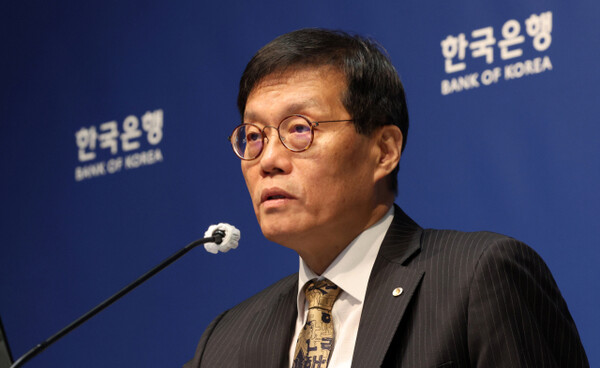Trade Negotiations Reduce Uncertainties; AI and Semiconductors Seen as Economic Buffers

Bank of Korea Governor Rhee Chang-yong assessed that uncertainties caused by the aftermath of high U.S. tariffs have been significantly alleviated through Korea-U.S. tariff negotiations. He explained that Korea's export performance was relatively favorable in the first half due to front-loading effects, where export volumes were accelerated before tariff increases.
In a BBC interview on Nov. 18, Rhee stated, “Korea is an economy with high export dependence, so trade tensions and tariffs have a significant impact,” adding, “In the first half of this year, actual indicators were not as bad as expected thanks to front-loading.” He further explained that the Korea-U.S. tariff negotiation results “considerably reduced trade uncertainties,” alleviating concerns about the full-scale impact of tariff shocks in the second half.
Additionally, Rhee proposed a joint venture (JV) concept combining the U.S.’s fundamental science capabilities with Korea’s manufacturing and applied technologies in relation to the $350 billion investment package to the U.S., emphasizing the need for expanded cooperation between the two countries.
Rhee also revealed that trade diversification is already underway. He stated, “Global supply chains have been changing since before trade conflicts, and as China’s industrial competitiveness rapidly improved, Korean companies naturally began diversifying their supply sources.”
He identified artificial intelligence (AI) and the semiconductor industry as safety nets for the Korean economy. Rhee said, “Korea has strengths not only in AI software but also in hardware,” forecasting that “regardless of who becomes the final winner in AI competition, AI expansion will increase demand not only for high-performance semiconductors but also for existing legacy chips.” He added, “In this regard, Korea is in a relatively safe position compared to other countries.”
Regarding recent AI bubble controversies, he stated, “As a central banker, it is difficult to make definitive technical judgments,” but revealed that “even if there are some bubbles, semiconductor demand will continue to increase as AI expands into ‘Physical AI’ applications in everyday products such as servers, robots, and small devices.”


